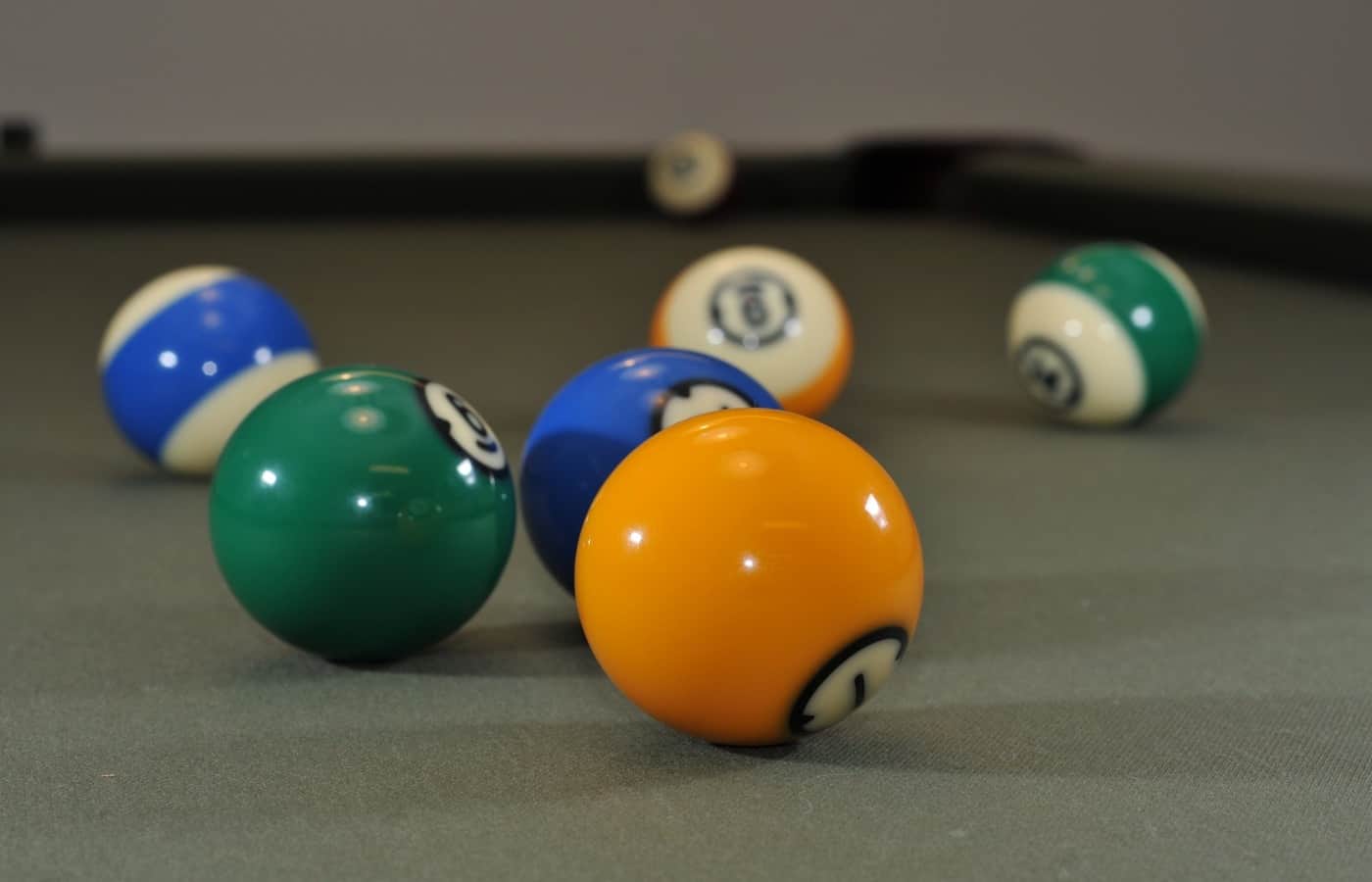Billiard balls are unique because they are solid and heavy, but move so easily across a pool table. They are all perfectly round and brightly colored. This often leaves us with the thought of how billiard balls are made.
To make billiard balls, resin is poured into a mold and is placed under high intensity pressure to ensure that they are as dense and hard possible. Once the balls have cured and are ready to go, they can hold up under 5 tons of pressure.
Throughout the years, they have been made from different materials. Each material proved to be better than the last, bringing us to what we know as the modern billiard ball.
How Are Billiard Balls Manufactured?

There are two common manufacturing processes for molding the balls into the proper shape. Liquid resin can be heated and poured into a latex mold, or the liquid will be injected into the mold to get rid of any bubbles. The resin that is used for the molds are pre colored, which is necessary to cover up any abnormalities that may become visible after the ball has been formed.
After the molding process is complete and the balls are hardened, the mold will be broken off and peeled away from the ball. The ball will then be taken to a lathe machine, which is used to smoothe the ball and fix imperfections. The numbers will be etched into the smoothe balls and filled with black resin. The purpose of the numbers are to give you a reference when discussing the balls on the table.
Once the smoothing process is finished, the ball will be weighed. Even though they are made in the same exact mold, they may be different in weight. The process of weighing the balls makes it easier to bundle balls of the same weight together in a set.
Since the majority of the process is completed with a machine, billiard balls can be made quickly and easily. This is beneficial because pool has become such a popular game that the demand for pool balls is always prevalent.
What Are Billiard Balls Made Of?
Pool became popular in the 1700s, mostly played by the French and the British. The first pool balls were made by wood, making them very cheap to produce.
Next, ivory became the popular choice for billiard ball materials. Ivory was a much more attractive material than the wood, but were more prone to yellowing as time went on. The demand for elephant tusks and their ivory began to threaten the population in Africa and Asia.
In 1869, the pool table company Phelan and Collender offered a $10,000 reward to anyone who could create a billiard ball that was not made out of ivory.
John Wesley Hyatt, an inventor from Albany, New York took on this challenge. He combined alcohol, camphor, and nitrocellulose. While this creation didn’t win him the prize money, it was recognized as one of the first synthetic plastics.
In 1907, Phelan Leo Baekeland, an American chemist, invented a new substance called Bakelite. This product was easy to make, durable, and didn’t carry any risk of breaking in the middle of a game. By the mid-1920s, Bakelite was the material that the majority of billiard balls were made out of.
Current Material
Today, billiard balls are most commonly made out of phenolic or polyester resin. Balls made of polyester resin are generally more affordable, but they won’t last as long as penolic resin balls. Phenolic resin will cost more, but they are much higher quality and can last as much as eight times longer than polyester.
Have you ever wondered what the inside of a pool ball looks like? You might be surprised to learn that it looks exactly the same on the inside as it does on the outside. The only exception is the number doesn’t go all the way through.
Who Makes the Best Billiard Balls?

More than 85% of billiard balls are made and manufactured by one company named Saluc. They are a Belgian company that produces billiard balls under the trademark Aramith.
The balls they make out phenolic resin, a mix of phenol and formaldehyde. This creates a strong and durable ball that is resistant to scratches and chips. The balls made by Saluc most commonly outlast the balls made by other competitors.
We recommend this set of billiard balls by Aramith on Amazon. They are in the moderate price range for Aramith, as there are pool balls that can range well into the 300 dollar range. Aramith pool balls are designed to have the perfect roundness, balance, and are made with phenolin resin which makes them desired at almost any professional pool gathering.
Final Thoughts
Simply put, billiard balls are crafted with a liquid resin and a mold. The resin is heated to very high temperatures and placed into a mold to cure the balls into the perfect shape and hardness that we see in today’s billiard balls.
Quality and performance of billiard balls usually rely on the manufacturer and how they are made. Aramith has definitely made a name for themselves in the pool industry, and they are definitely here to stay.
Billiard balls that are made out of phenolic resin will last the longest, but also costs the most. The price for high-quality Aramith balls may sound like a lot, but in terms of performance and longevity they have everyone beat. An expensive set of Aramith balls can last up to about 40 years.

